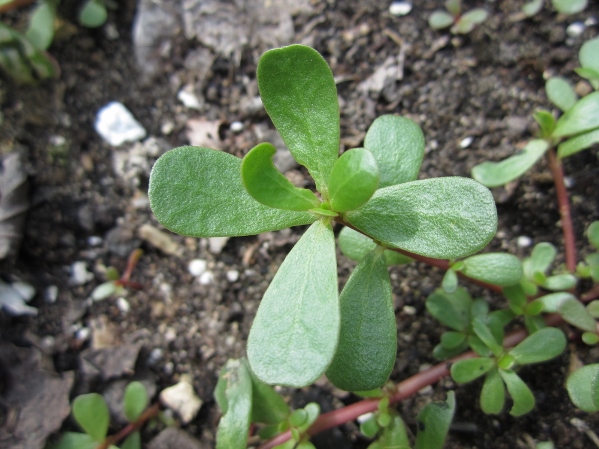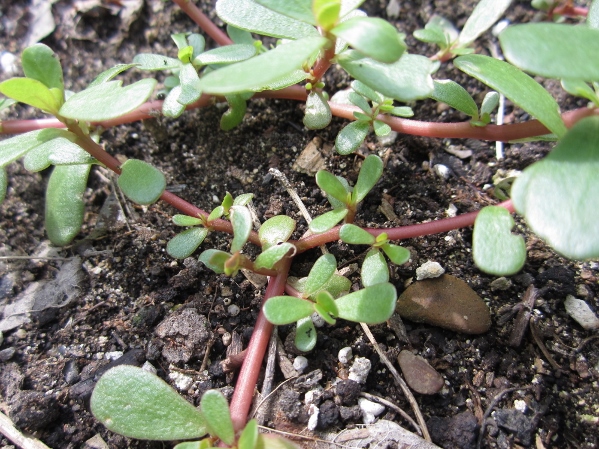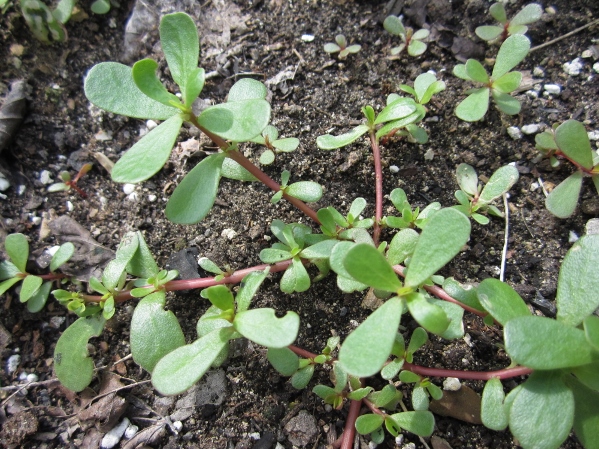Local Wild Plant Profile: Purslane
July 31, 2013

Purslane (Portulaca oleracea) is a plant that many people who have gardens know as a “weed” (it is also known as “Pigweed”).
It seeds prolifically and can be found in almost any garden. Less known however is that it has good amounts of beta carotene (more than spinach), iron, vitamins A and C, calcium, and potassium.
Purslane is found throughout the Michigan area in gardens, waste areas, and just about any open area. In recent years it has shown up at farmer’s markets in Grand Rapids, but there is really no reason to purchase it when it grows so abundantly.
Identification
Purslane grows along he ground with light green leaves and reddish stems:

The plant produces thick stems with reddish stems that grown between 4 to 10 inches long.
The leaves are opposite or alternate, ranging from ½ inch to 2 inches long. The leaves are “fleshy” and paddle-shaped with a small, stalk-less, 5-pettled flower that opens on sunny mornings:

To harvest purslane, pull it out of the ground and wash it thoroughly. Some recipes call for eating just the green leaves, but the stems are also edible. They can be added fresh to salads or boiled in just enough water to cover for ten minutes. Purslane can also be used in stir-frys and on sandwiches.
For the ambitious, the stems can be pickled and the seeds can even be ground into flour.
Local Wild Plant Profile: Purslane was published on July 31, 2013
Share on Social Media
- Share on Mastodon
- Share on Twitter
- Share on Facebook
- Share on Tumblr
- Share on Reddit
- Share on Telegram
- Share on WhatsApp
These links are not an endorsement of social media. They are provided for convenience and to help foster the spread of anarchist ideas.